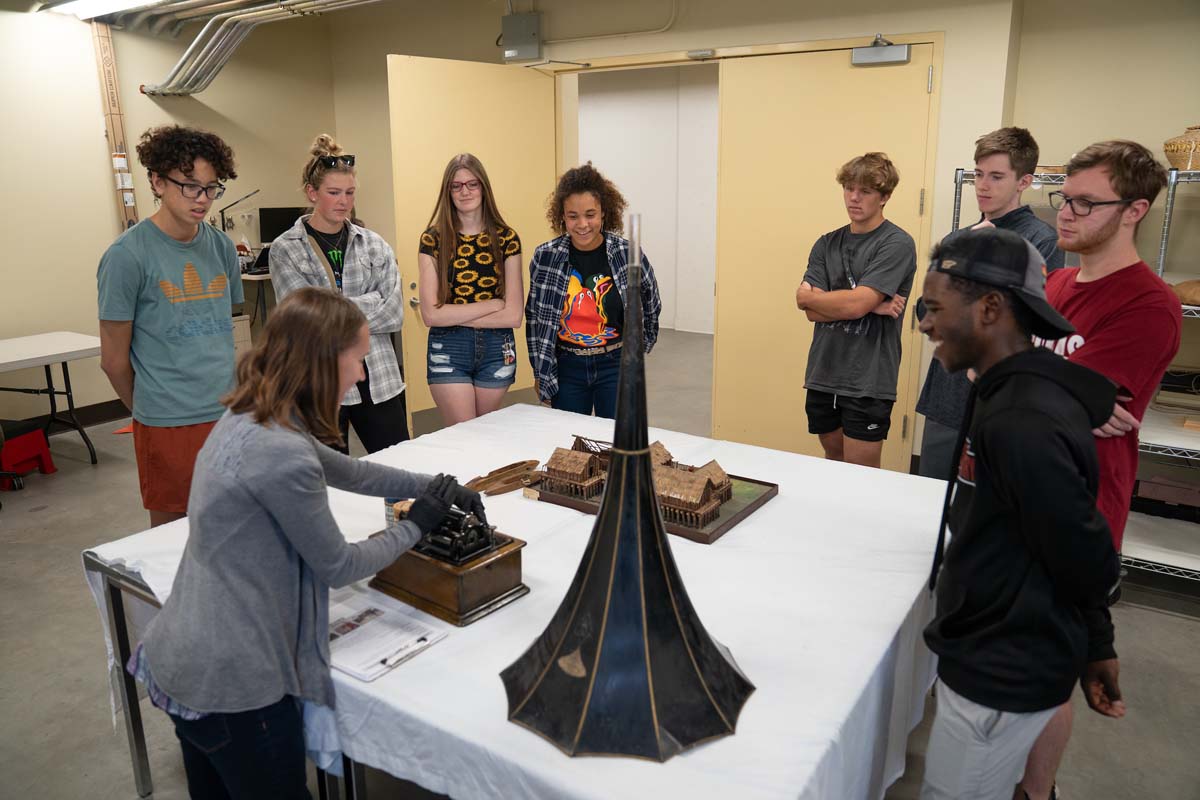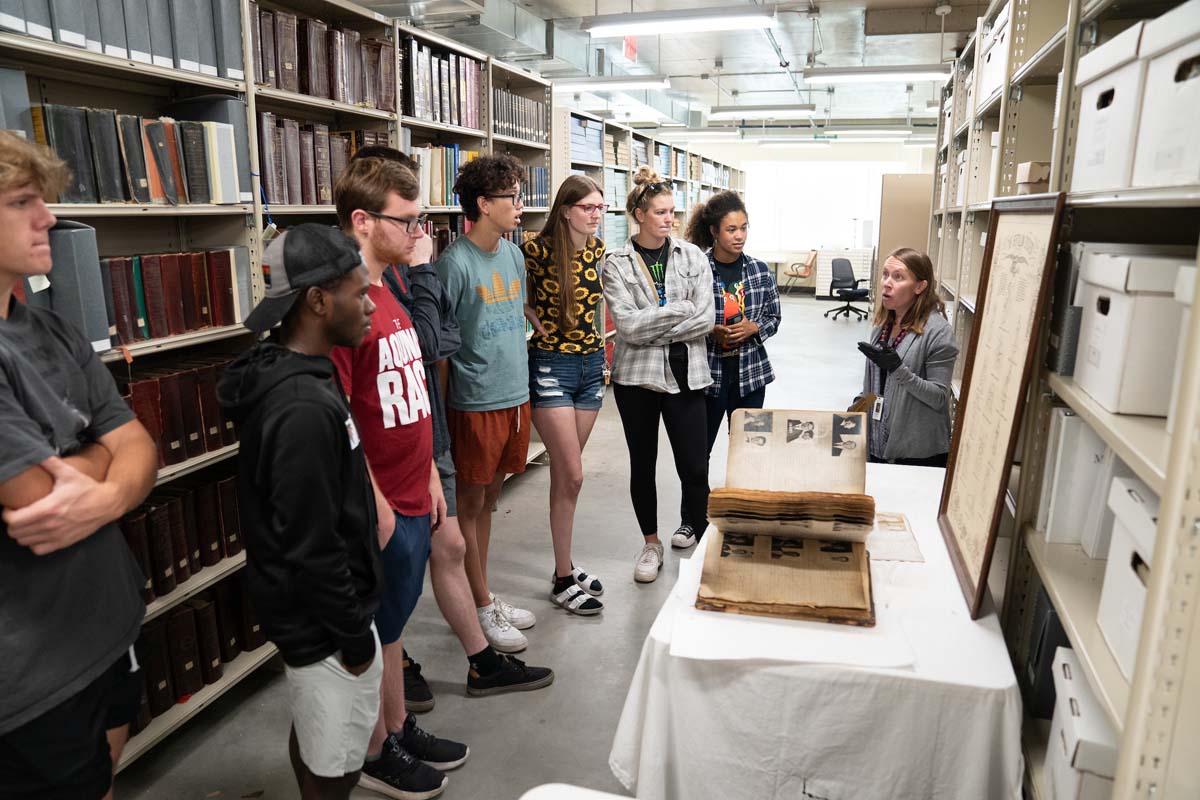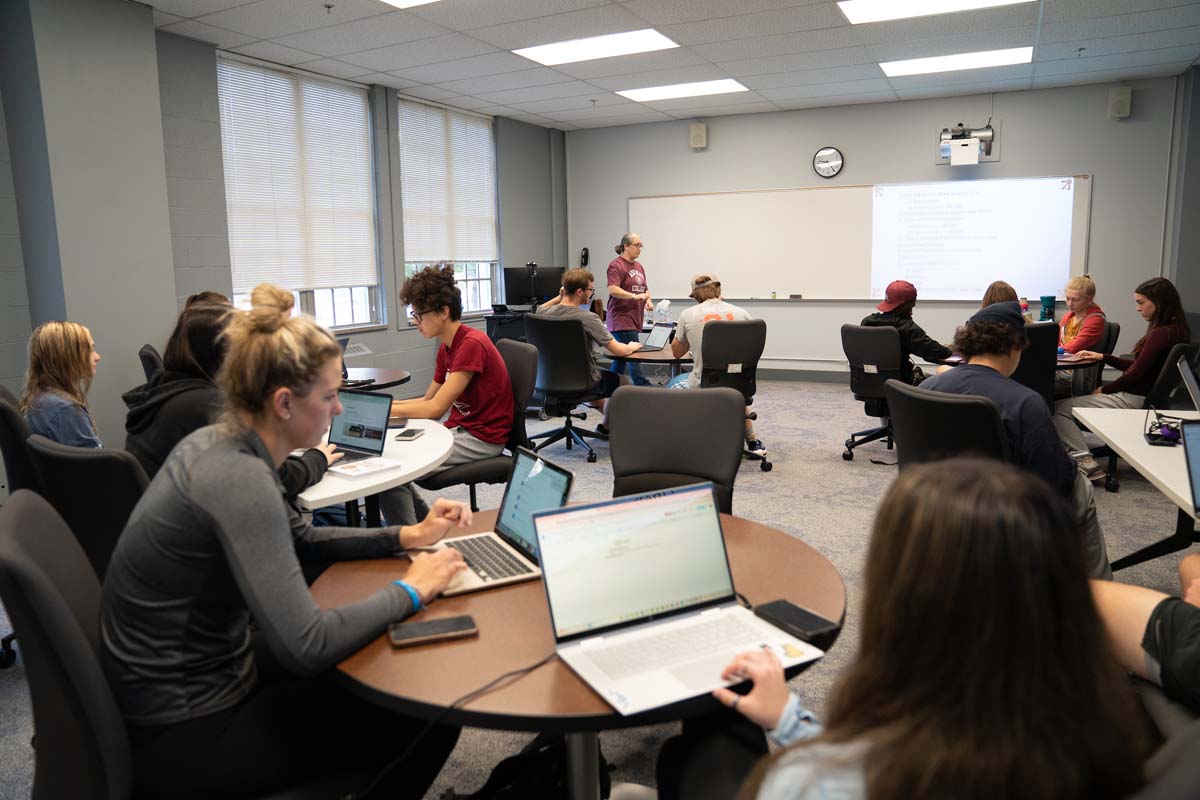Students in Dr. Bethany Kilcrease’s World History course spent a class period touring a place that not many get to see: The City of Grand Rapids Community Archives and Research Center (CARC) which also houses the off-site collections of the Grand Rapids Public Museum.
The class is part of Aquinas’ innovative block model pilot, which allows students to complete their classes one at a time in three-and-a-half-week blocks. Students attend one class every day during that time from 9 a.m. until noon, and that additional time has allowed professors to plan experiences for their students that bring their subjects to life, like a visit to the Public Museum’s off-site collections.
“Part of the philosophy of the block program is not just that we study a subject, but that we actually do it,” said Dr. Kilcrease. “We become historians or biologists or philosophers for that block. So we’re going to dig in and look at primary sources, three-dimensional ones to see what people in historical fields would actually do as part of their jobs.”

Dr. Bethany Kilcrease teaches World History to a freshman class in the block model pilot at Aquinas College.
This process of learning by doing is also known as experiential learning, and it’s something that all Aquinas professors strive to include in their courses whether they’re teaching in the block model or traditional scheduling. One-class-at-a-time scheduling just happens to make scheduling these types of field trips and activities much easier.
Experiential learning builds on what is learned through lectures and reading, supporting multiple learning styles.
“The museum trip was really cool because I'm a visual learner,” said Savanah Hammock. “It was a cool way to learn and get out of the classroom.”
The CARC tours, led by staff Museum Educator Katie Bilby and volunteer Gina Bivins, were like walking in a time machine with thousands of artifacts carefully preserved and organized. One of the first objects students had the opportunity to see was a phonograph in working condition. With a few cranks of a handle, music over a century old filled the room.
“It's like something that has been transported from the past. It's not like the audio has been updated from its original condition,” said first-year student Preslee Hall. “You don't really think about it in your day-to-day, just going by with your AirPods, how this stuff has come to be.”
Other objects students were able to see included Grand Rapids mugshots from the turn of the century, an X-ray machine built to assess the fit of shoes in stores, the original uniforms of the Grand Rapids Chicks who were a WWII-era women’s softball team, samurai armor, and a machine that claimed to reverse hair loss through static electricity.
 Tours and visits for research are available at the CARC by appointment and the staff are delighted when they have opportunities to share the
stories of the objects they preserve.
Tours and visits for research are available at the CARC by appointment and the staff are delighted when they have opportunities to share the
stories of the objects they preserve.
"We enjoy opening the doors of the Community Archives and Research Center to give visitors a behind-the-scenes look at how the Grand Rapids Public Museum catalogs, stores, and preserves our large Collection of over 250,000 artifacts and scientific specimens,” said Erin Koren, the CARC Director of Education. “There are endless stories to be shared, connecting learners to the science, history, and culture of our local and global community."
The block model pilot will be offered to incoming first-year students again next year with more opportunities for experiential learning like this visit to the CARC. Spots for next year are limited. First-year applicants who are interested in enrolling in the block model should indicate interest when they apply and make their deposit by March 1st to be considered for one of the limited block spaces in Fall of 2024.
Learn more about one-class-at-a-time options




